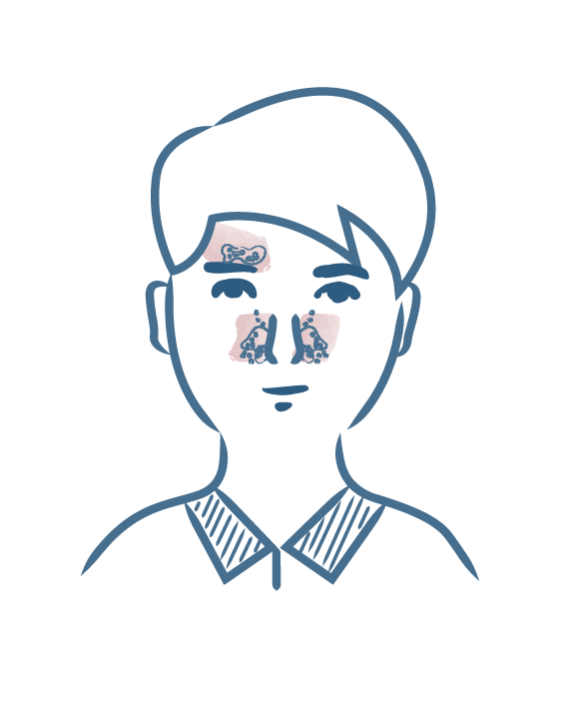What is seborrheic dermatitis?

Seborrheic dermatitis on the scalp
Seborrheic dermatitis on the scalp is the most common form of the condition. In fact, the scalp is affected in 95%(1) of cases of seborrheic dermatitis.
What are the symptoms of seborrheic dermatitis on the scalp?
Depending on the severity of the disease, simple dandruff will be observed in the milder forms of the condition and oily, yellowish dandruff associated with hyper-seborrhea and erythema in the more severe forms.
Lesions can spread to the entire scalp, but more commonly affect the top of the skull or vertex, the parietal areas and the scalp edge to form what is known as the "seborrheic crown".
Lesions on the scalp (erythema) are barely perceptible because they are masked by the hair, but dandruff is noticeable and lends the disease its highly visible character. Besides dandruff, itching, also known as pruritus, is another feature of the condition. Itching is almost systematic in cases of seborrheic dermatitis of the scalp. The itching can sometimes be very intense, affecting the quality of daily life (1).
Seborrheic dermatitis on the scalp and simple dandruff
The notion of "dandruff" remains poorly defined. In fact, this term may refer to several things, including mild seborrheic dermatitis on the scalp. However, it can also describe a consequence of the use of unsuitable shampoos or cosmetics. In these specific cases, the term pityriasis capitis simplex, or simple dandruff, is used.
The relationship between seborrheic dermatitis of the hair and simple dandruff is unclear and often the subject of controversy. Moreover, in the scientific literature, some authors use the term dandruff as a term designating desquamative conditions (falling of dead cells) of the scalp, irrespective of their origin.
Treatment of seborrheic dermatitis on the scalp is administered locally in the form of a shampoo. It acts in various ways:
- On hyperseborrhea, by absorbing excess surface sebum.
- Against the proliferation of yeasts of the Malassezia genus, thanks to antimycotic action.
- To prevent the formation of dandruff via desquamative action.
- By fighting redness and itching with anti-inflammatory action.
(1) Misery L. Dermatite séborrhéique. EMC - AKOS Traité de Médecine. (2011), pp. 1-5.
More information
- Discover Seborrheic dermatitis on the face
What is seborrheic dermatitis?
Seborrheic dermatitis on the face
- Discover Seborrheic dermatitis on the torso
What is seborrheic dermatitis?
Seborrheic dermatitis on the torso
- Discover Eczema or seborrheic dermatitis?
What is seborrheic dermatitis?
Eczema or seborrheic dermatitis?
- Discover Seborrheic dermatitis in infants
What is seborrheic dermatitis?
Seborrheic dermatitis in infants
Our care routines
Irritated skin with redness and scales

